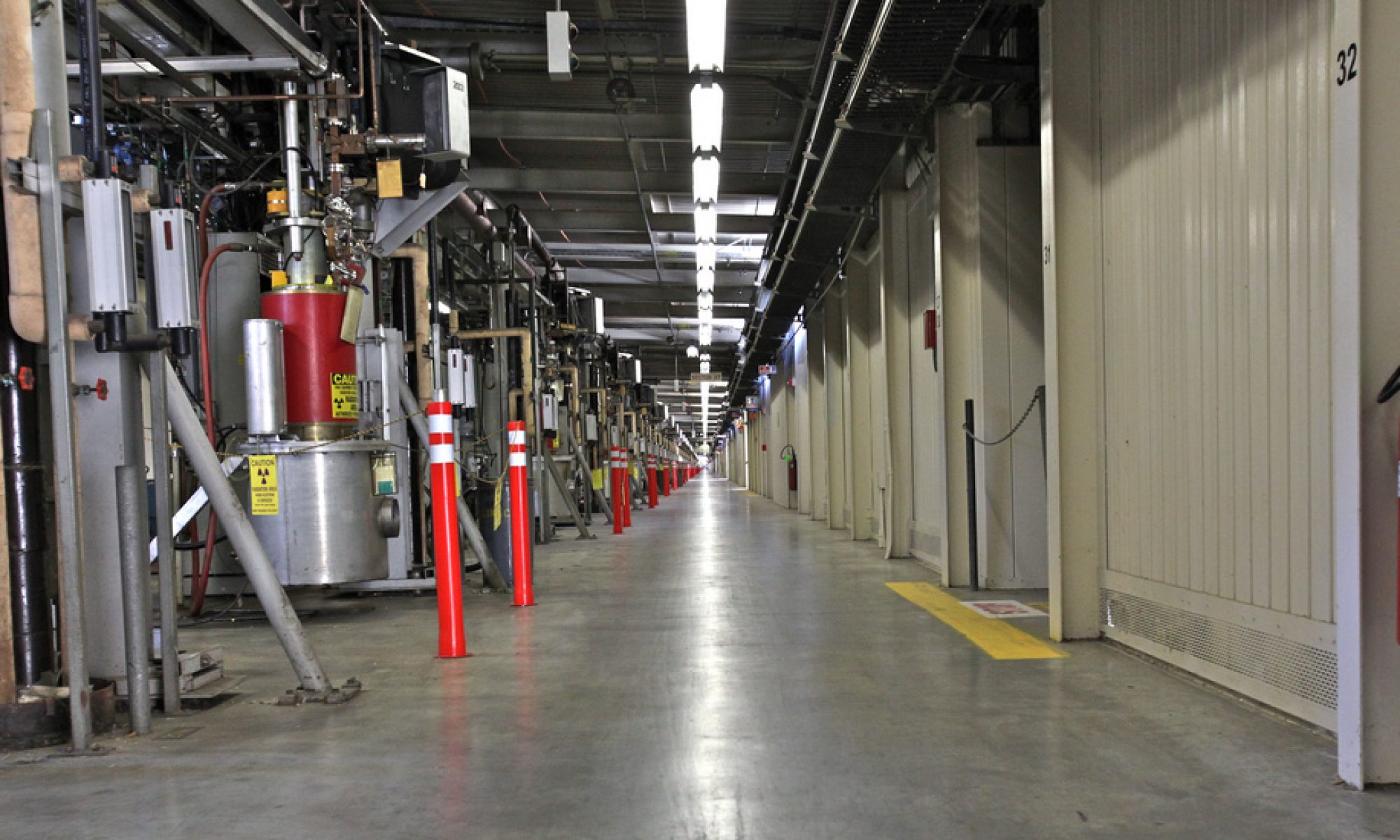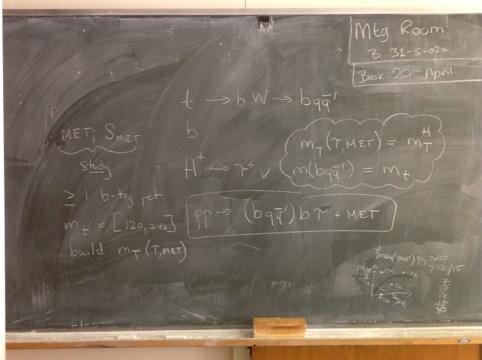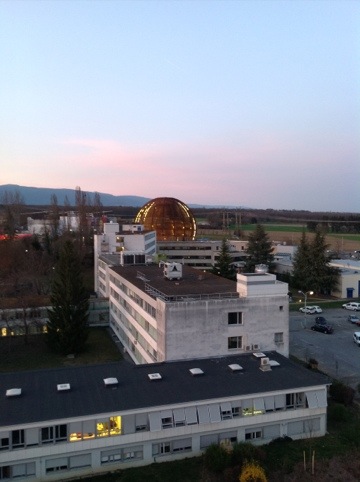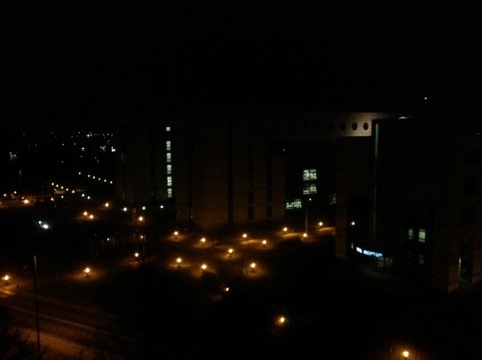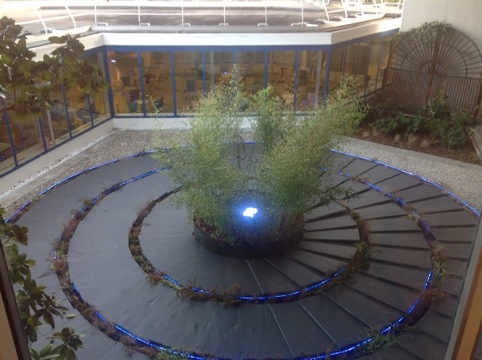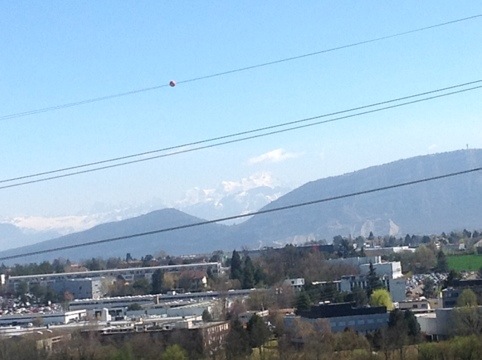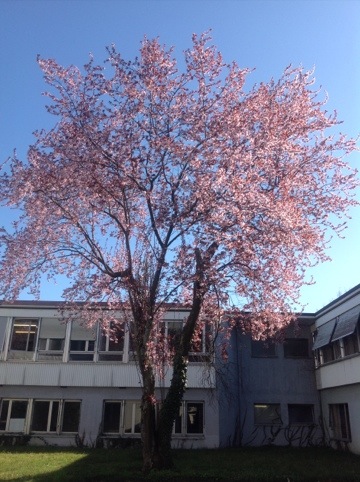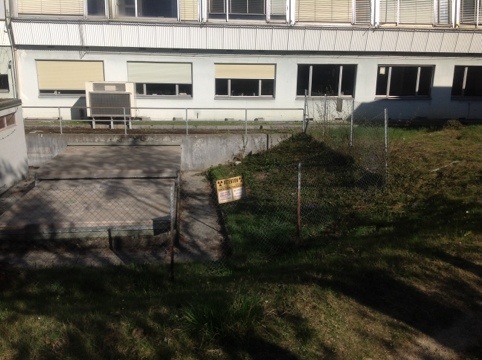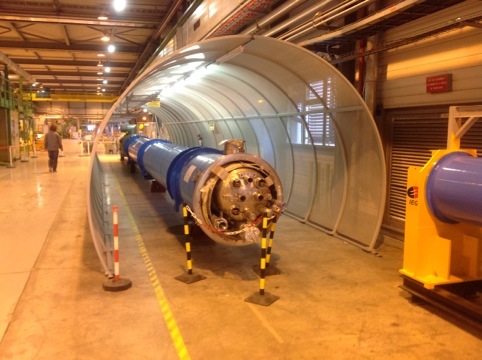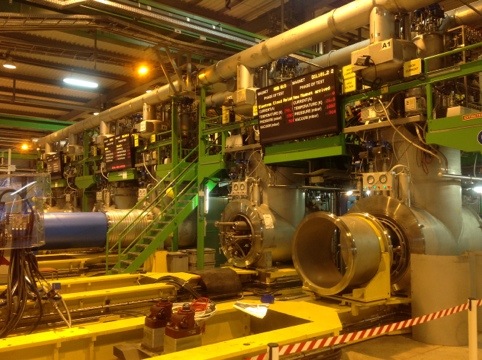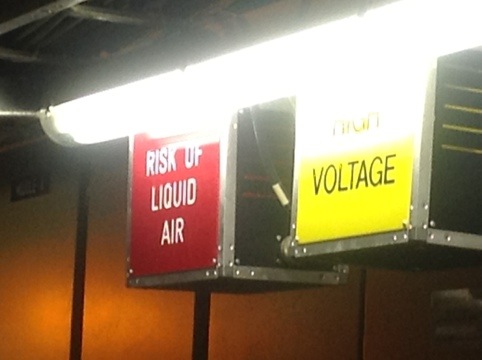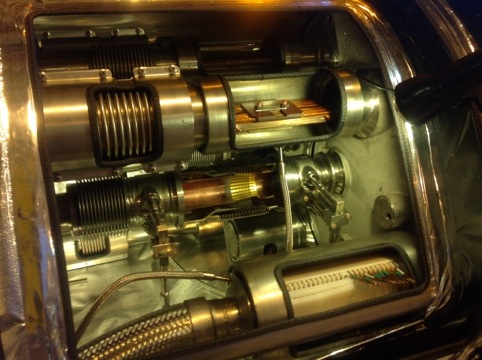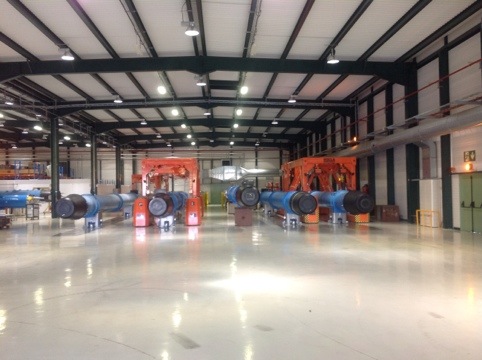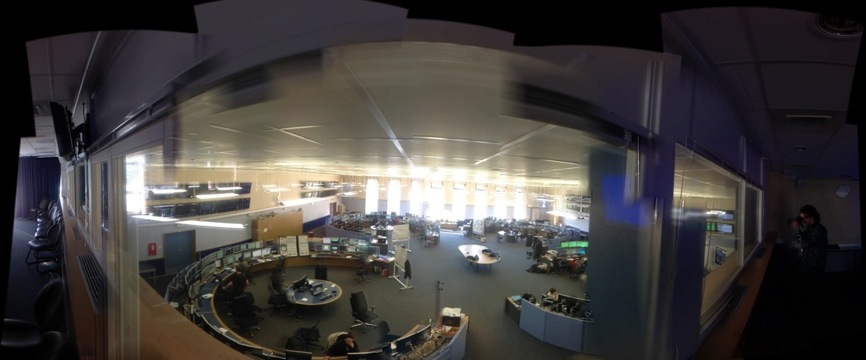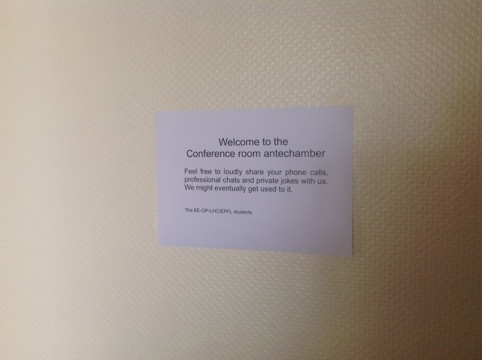In an effort to stay awake on the first day of jet lag (my first day at CERN), I spent time thinking about how to adapt our existing electrically charged Higgs boson search – geared toward the decay of top quarks – to a new, heavy Higgs search where the Higgs is produced alongside a top quark.
After dinner on the first night, we go to the top of the building that houses the CERN Main Auditorium and take photos of CERN at dusk.
CERN at night, as photographed from my CERN Hostel Room. I will never forget what my father said to me once when he took me to Boston College, his graduate alma mater. He told me that when the lights were on in the lab at night, you knew there were people in there staying up later than you, working on harder problems than you.
The new courtyard outside the CERN Restaurant No. 1 looks like some alien sawblade.
Mont Blanc stands huge and gorgeous on a particularly clear day.
The Jura are the mountains to the west of CERN (Mt. Blanc and the Alps are far to the east). The strange tower in the foreground is a water tower. It was also my signature goal during my runs at CERN, each of which was about 2.5 miles and involved running a few laps around a ring-road (part of an accelerator complex at CERN) just below the water tower.
A beautiful tree is blossoming. On this day, the blossoms were beginning to blow off in the wind, leaving behind the buds of leaves.
Sharing the same courtyard as the tree above was a fenced off area. Danger! Radiation!
A tour visitor center housed in the same space as the LHC magnet testing facility. This is a display part of an LHC superconducting dipole magnet.
The superconducting magnet test facility. It looks like a busy train station, complete with information signs on the platforms. One of these magnets is currently operating at 26 Kelvin. The magnets can be slid into place and hooked up to services, mimicking the conditions they experience 150m below us in the LHC tunnel.
The cryogens cooling the magnet superconductors to 26 Kelvin, if released into the air, are capable of liquifying the nitrogen in the air. Even if they warm up enough to avoid the liquid nitrogen state, they are still capable of causing the water in the air to rapidly precipitate out. Safety videos of this process shown during CERN training show a cryogen release, followed by cloud formation and precipitation.
A cutaway section of a superconducting dipole magnet shows the complex multi-layered inner workings.
Spare LHC magnets are housed here, in case they are needed.
A panoramic shot of the LHC control room. Just about a day later, LHC delivered the first 8 TeV proton-proton collisions.
Yes, please, continue to speak loudly outside my office. PLEASE.
